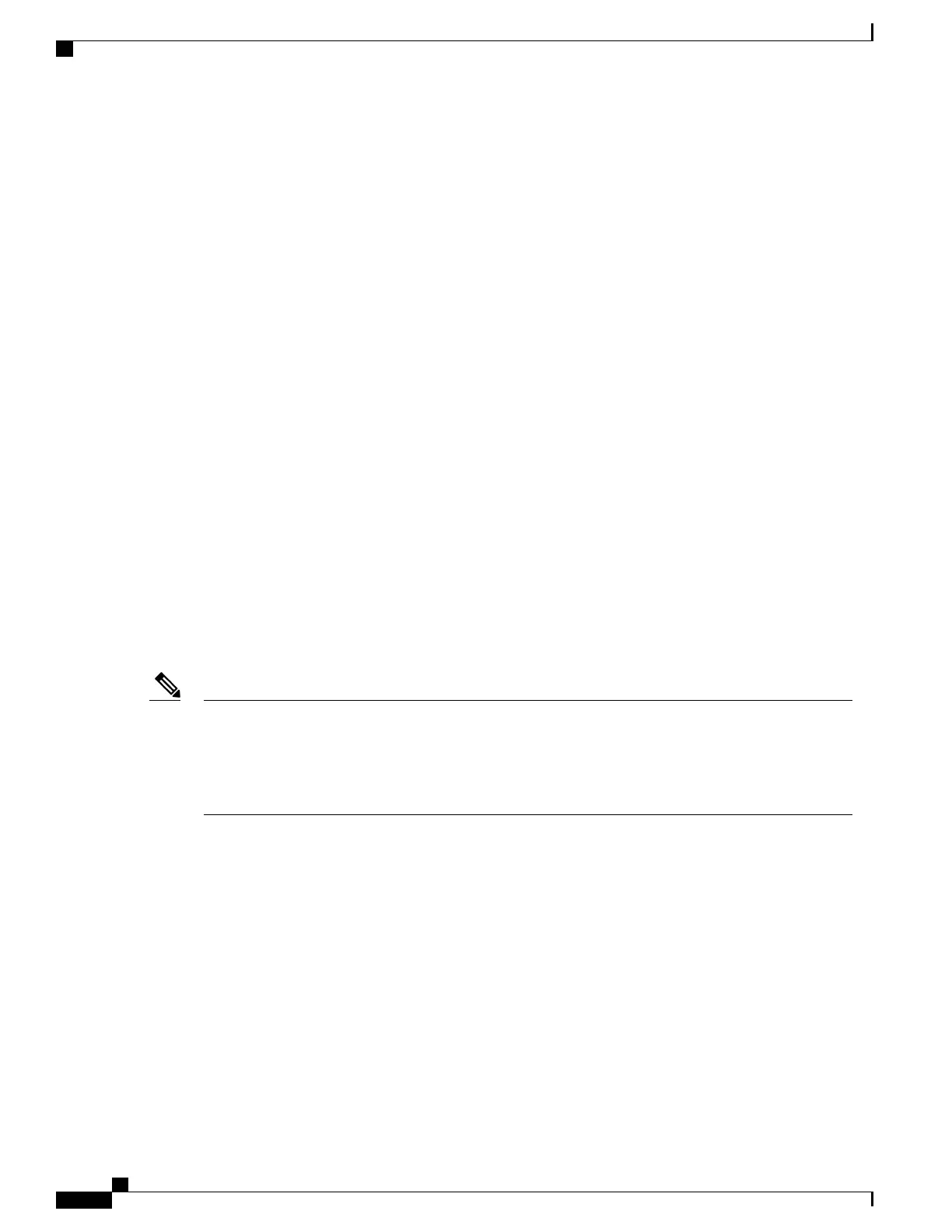layer header can be maintained if the router bridges the network layer protocol. However, even regular bridging
terminates the VLAN header.
Using the Integrated Routing Bridging (IRB) feature in Cisco IOS XR Software Release 5.1.0 or greater, a
router can be configured for routing and bridging the same network layer protocol, on the same interface.
This allows the VLAN header to be maintained on a frame while it transits a router from one interface to
another. IRB provides the ability to route between a bridged domain and a routed domain with the Bridge
Group Virtual Interface (BVI). The BVI is a virtual interface within the router that acts like a normal routed
interface that does not support bridging, but represents the comparable bridge group to routed interfaces within
the router. The interface number of the BVI is the number of the bridge group that the virtual interface
represents. This number is the link between the BVI and the bridge group.
Because the BVI represents a bridge group as a routed interface, it must be configured only with Layer 3 (L3)
characteristics, such as network layer addresses. Similarly, the interfaces configured for bridging a protocol
must not be configured with any L3 characteristics.
BFD over IRB is a multipath single-hop session. In a BFD multipath session, BFD can be applied over virtual
interfaces or between interfaces that are multihops away. The Cisco IOS XR Software BFD multihop is based
on the RFC 5883—Bidirectional Forwarding Detection (BFD) for Multihop Paths. BFD over IRB is supported
on IPv4 address, IPv6 global address, and IPv6 link-local address. The BFD over IRB is supported only in
asynchronous mode and does not support echo mode. The BFD over IRB feature is supported only on the
ASR 9000 enhanced Ethernet line cards.
BFD over Bundle Per-Member Link
BFD over Bundle (BoB) Per-Member Link Mode is a standard-based fast failure detection of link aggregation
(LAG) member links that is interoperable between different platforms. This provides an option to choose the
per-member link mode to use either Cisco or IETF standard. This feature is supported only on Cisco ASR
9000 Enhanced Ethernet Line Card.
Note
•
All the bundles in the system can belong to multiple mode at any single point in time.
•
The global command for configuring BoB over bundle is available only up to release 5.3.0. For
releases starting 5.3.1, you have the option to configure BFD over Bundles CISCO/IETF Mode
support on a per bundle basis.
•
The Cisco mode uses CDP MAC whereas IETF mode uses IANA assigned MAC.
•
Cisco BFD over Bundle sessions use destination UDP port: 3784, while IETF BFD over Bundle sessions
use destination UDP port: 6784.
Limitations
These limitations apply for the BFD over Bundle Per-Member Link Mode feature:
•
Supported only on Cisco ASR 9000 Enhanced Ethernet Line Card.
•
BFD Echo mode is not supported.
•
The mode change is applied only for new sessions. To apply mode change for existing sessions, delete
and then recreate the sessions.
Cisco ASR 9000 Series Aggregation Services Router Routing Configuration Guide, Release 5.1.x
194 OL-30423-03
Implementing BFD
BFD over Bundle Per-Member Link

